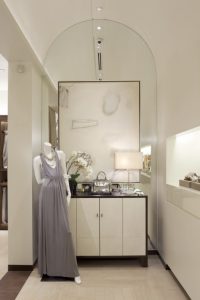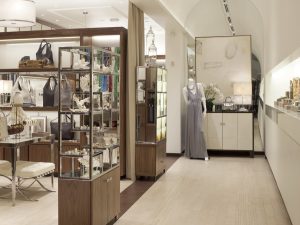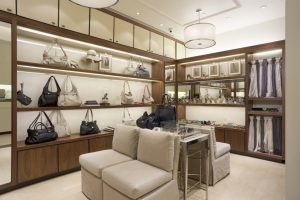Banana Republic had its eye on the accessories market long before the recession changed consumers’ splurges from entire outfits to more wallet-friendly items like a new necklace or scarf. “Accessories are a great way for customers to dress up,” says Mark Nitkey, Banana Republic’s senior director of store design. “We believed there was a market to offer stylish, affordable accessories.”
While the company had introduced small areas for shoes, handbags and jewelry cases into its apparel stores more than a decade ago, the goal behind its new Edition concept, which debuted in the brand’s hometown of San Francisco this past spring, was to translate the retailer’s affordable luxury mantra into a new format. “We asked ourselves how we could create a sophisticated and elevated experience that was easy and inviting,” says Nitkey.
To start, the retailer took everything out of the case, from the sunglasses down to the bracelets, rings and necklaces, so consumers could touch and feel the product.
Still, Nitkey says one of the biggest challenges was figuring out how to make shoppers feel comfortable picking up the small, often delicate merchandise. So designers created a modular display system of custom suede stands, risers and trays that allows shoppers to easily return merchandise to its place without it looking disheveled.
A corridor down the side of the store leads shoppers along an illuminated cove-like shelf inset into the wall on the right where the latest jewelry items are displayed at eye level. The other side of the 1400-square-foot store is broken up into three rooms for product category presentations. The front area is reserved for the season’s best, while the center room includes a desk-like cashwrap where customers are invited to sit down in custom leather chairs during checkout. Shoes and additional handbags are on display in the back room, where leather cushioned chairs replace standard shoe department benches.
The set-up, says Nitkey, helps create a sense of exploration for the shopper as she ventures in and out of the rooms. “You don’t see all the product at once,” he says, “so it heightens the sense of discovery.”
Edition stylists are armed with extensive product knowledge to share with consumers, including how and where a product is made. And all back stock, except for shoes, is housed on the floor in nearby drawers and cabinets, so employees can easily access merchandise or restock items. “It’s a more intimate, personal experience,” he says.
Advertisement
Adding to that comfort level, designers chose a modern, residential setting, complete with porcelain flooring, a warm, muted color palette and an arched entryway and ceiling that extend the length of the boutique. While the store design was inspired by Banana Republic’s latest store concept, Nitkey says the two are not supposed to look alike. For example, the Edition store houses a natural walnut finish, while the wood tones in Banana’s latest store are darker. “It’s intended to stand on it’s own,” he adds.
But that doesn’t mean the 31-year-old retailer won’t learn from its new venture. Nitkey says Edition is allowing the retailer to test the ins and outs of accessories retailing, as well as the basics of service, display and layering product throughout the store. The most successful of those ideas will be applied inside Banana Republic stores, including more out-of-case jewelry presentations.
“It’s a great fit for the brand,” he says, “and an opportunity to explore design.”
Project Participants:
Client
Banana Republic, San Francisco –Mark Nitkey, senior director, store design; David Fruscione, store design and fixture design and props; Zephyr DeGrote, design coordinator, project management; Sarah Larson, fixture procurement; Tia Tiscornia, vp, visual merchandising; Maribel Lopez, Harry Bader and Peter Alwast, visual merchandising
Architect
Gensler, San Francisco — Ted Jacobs, principal; Alison Carr, designer; Genesee Rosal, project manager
Advertisement
General Contractor
Timberwolff Construction Inc., Upland, Calif.
Outside Design Consultant
Revolver Design, Berkeley Calif. (lighting)
Art
Dolby Chadwick Gallery, San Francisco
City Picture Frame, San Francisco
Audio/Visual
PlayNetwork Inc., Redmond, Wash.
Cabinets
Fleetwood, Leesport, Pa.
Displayers
Bernstein Display, Brooklyn, N.Y.
Leggett & Platt, Piedmont, Ala.
Triad, St Louis
Advertisement
Fixtures
Triad Mfg., St. Louis
Flooring
DalTile, San Francisco
Furniture
Fitzgerald, San Francisco
Kneedler Niedermaier, New York
WS Home, San Francisco
Lighting
Rexel Capitol, Los Angeles
Morrison, San Rafael, Calif. (pendants)
Mannequins/Forms
Schläppi/Bonaveri Manichini, Renazzo di Cento, Italy
Props and Decoratives
Roost, Sausalito, Calif.
Two’s Co, Elmsford, N.Y.
Signage/Graphics
Triangle Signs, Baltimore, Md.
Wallcoverings and Materials
Moore & Giles (leather for CW chairs) Forest, Va.
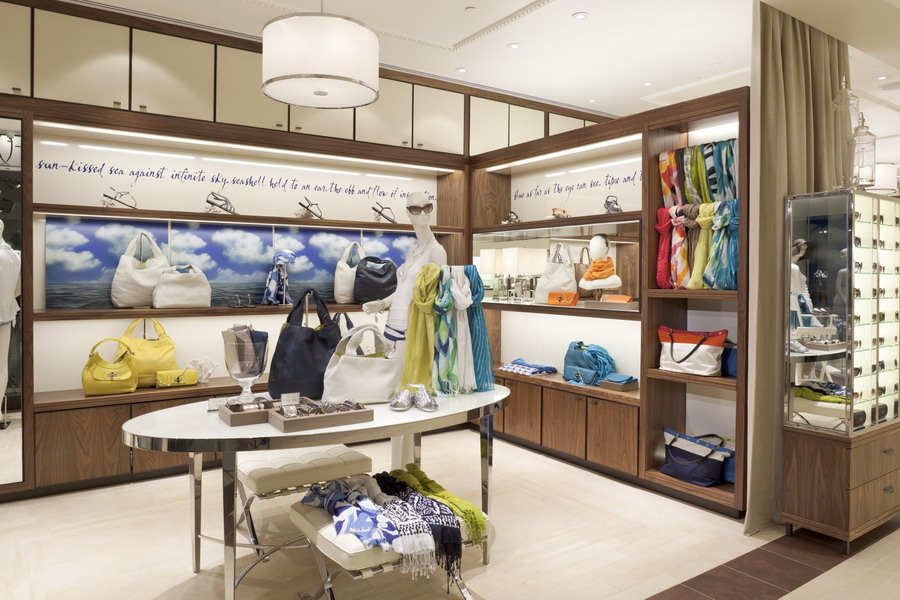

 Photo Gallery7 days ago
Photo Gallery7 days ago
 Headlines6 days ago
Headlines6 days ago
 Headlines1 week ago
Headlines1 week ago
 Headlines2 weeks ago
Headlines2 weeks ago
 Headlines1 week ago
Headlines1 week ago
 Designer Dozen2 weeks ago
Designer Dozen2 weeks ago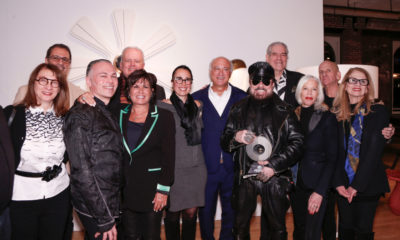
 Special Reports2 weeks ago
Special Reports2 weeks ago
 Designer Dozen5 days ago
Designer Dozen5 days ago


